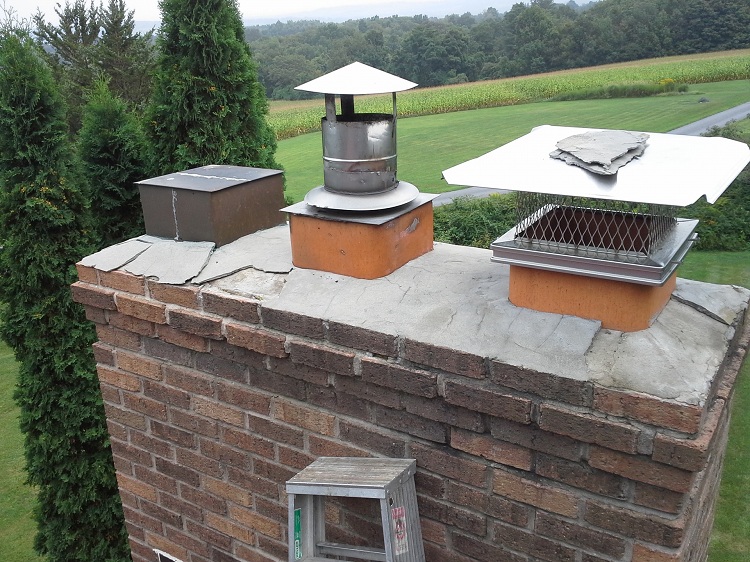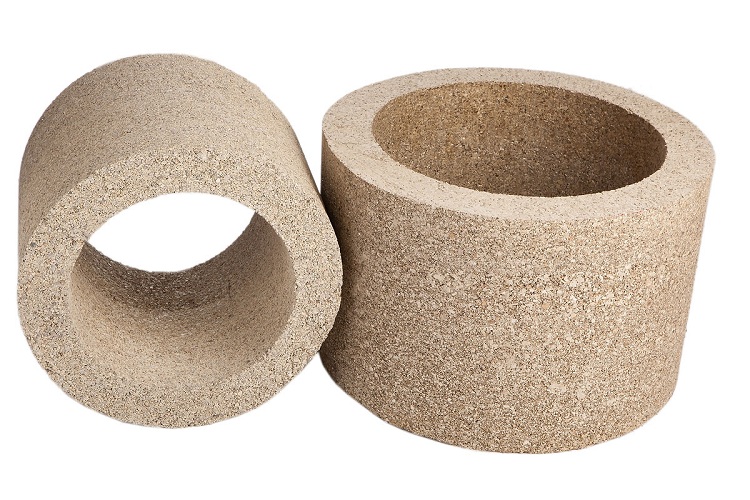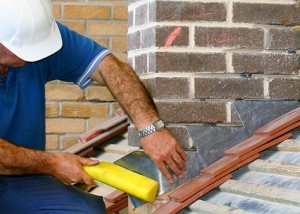The chimney pipe is a structural element, the effectiveness of the heating system in a house or other building depends on its choice. All products for the chimney design can be classified according to the material of manufacture. The material determines the technical characteristics of the product, therefore, in order to make the right choice of chimney pipe, you need to familiarize yourself with each material separately.
Content
Varieties of materials
Today, there are several basic materials from which chimneys are made. These are time-tested, classic materials, and modern solutions that have high technical characteristics and are quite simple to install.
In addition to the classification according to the material of manufacture, pipes for the chimney are divided into types and other parameters:
- by design;
- in cross-sectional shape.
According to the shape of the section, the following types of these products are distinguished:
- round;
- square;
- rectangular;
- ovoid (oval);
- polygonal.
However, the material of the part is the most important factor that most affects the performance of the system.
Previously, chimney pipes were made of the most simple, improvised materials and it was necessary to ensure the safety of the chimney design. Therefore, the material had to be not only simple, but also fire resistant. For such purposes, clay or bricks were best suited, however, todayindustry has stepped far forward and now you can meet a wide variety of products from modern materials, which have many advantages.
Consider the main materials from which pipes for chimney structures are made:
- stainless steel;
- cast iron;
- brick;
- ceramics;
- concrete;
- asbestos cement.
There are also non-standard products made, for example, from vermiculite. Each material has its own unique properties, therefore, to select pipes for a specific situation, it is recommended to study each of the above materials.
Stainless steel pipes
Stainless steel is a very reliable material, which has many advantages and is used in chimney constructions everywhere. Consider the main advantages of using stainless steel products:
- stainless steel has a high coefficient of thermal stability. Pipes from this material can be used at temperatures up to 500 ° C;
- in addition, another important advantage of stainless steel is resistance to the harmful effects of corrosion;
- such products are resistant to aggressive chemicals;
Advice! When purchasing parts for a chimney construction made of stainless steel, pay attention to what steel grade the products are made of.Experts recommend buying acid-resistant steel grades, since during operation the smoke forms rather aggressive compounds with condensate, which can harm the walls of the chimney.
- also stainless steel products are lightweight;
- the cost of such products is quite affordable, in comparison with other options;
- it is also worth noting the gas tightness of this material;
- stainless steel parts have a presentable appearance;
- the installation of such a chimney pipe is simple due to its light weight;
- the service life of such products is about 10-15 years.
Stainless parts are an excellent choice for installing a chimney design. Such products are quite easy to install.
Cast iron pipes
Cast iron pipes for chimneys are rarely used today, since this material is inferior, from a technical point of view, to steel products. Previously, cast iron products were used to organize chimneys at enterprises.
It is worth noting that cast iron products have a greater weight than steel, and are inferior to steel in terms of ductility. Among the advantages of such material can be identified:
- affordable cost;
- low coefficient of thermal conductivity.
Experts do not recommend purchasing cast iron products, since their installation is a very difficult event due to the large weight of the parts. Cast iron can be suitable if you need a quick and cheap installation of many chimneys.
Maintenance of cast iron structures is quite difficult. The complexity of installation, maintenance and general lack of competitiveness with other, more modern materials, determined the position of cast-iron products in the building materials market.
Brick pipes
Brick pipes are a fairly popular solution for a chimney. However, they are not as versatile as products from modern materials.

Installation and maintenance of brick pipes is fraught with difficulties, and building skills requires construction skills
Brick chimneys have a number of drawbacks that you need to pay attention to:
- the inner walls of the chimney are not smooth, so such chimneys easily accumulate soot and clog;
- the weight of the brick structure is quite large;
- installation of a brick chimney is a rather complicated undertaking;
- products from this material have low resistance to corrosion, which leads to structural failure.
However, such products have some advantages that determine their popularity:
- differ in excellent indicators of fire safety. A brick pipe can withstand temperatures as high as 700 ° C, which is why it is excellent for gas boilers and solid fuel heating equipment;
- the service life of such products can reach 50 years during normal use, and in some cases more;
- brick designs are aesthetically pleasing. Such a chimney can become an adornment of a classic private house and a modern town house.
Important! The brick structure has a large weight, so when installing it, you need to take care in advance to create a separate foundation for the chimney, not associated with the main one.
The installation of a brick chimney structure is best entrusted to an experienced specialist, since it will be very difficult for a beginner to calculate the required diameter and other important factors. Any errors when laying the chimney of their brick can lead to disastrous consequences.

Ceramic products can serve as an internal chamber in a brick structure, as well as an independent chimney
Ceramic pipes
Immediately it is worth saying that a chimney from such pipes is considered the most durable option. Products are delivered up to 3 m long and with them are additional components in the form of blocks with holes.Ceramic chimney constructions have the following advantages:
- high coefficient of thermal stability and heat absorption. Chimneys made of ceramic material retain heat in themselves, so the external blocks of these products do not heat up. Due to this, they do not need to install an additional heat insulator;
- resistance to corrosion and aggressive chemicals that are formed when smoke is mixed with condensate;
- ceramic products are very easy to assemble, which differs from brick counterparts. Installation of a brick chimney can be carried out by a person who does not have special building skills and knowledge in this area. The main thing to do is to choose the diameter of the pipes correctly.
- a huge range of ceramic products. Today you can choose products from this material for any heating equipment: boilers, stoves, fireplaces, etc .;
- ease of maintenance is also considered an advantage of parts made of this material.
- the operational life of such products is from 50 to 100 years.
Note! The weight of ceramic pipes is less than similar brick products, however, when installing a chimney structure, you should also take care of organizing a separate foundation for it.
Experts recommend installing ceramic pipes for the chimney structure before starting the construction of the roof and interior decoration.

For the installation of the chimney, concrete blocks can be used, but such a pipe will not be durable
Concrete chimney pipes
Concrete parts for a chimney design are very rarely used. The main advantages of products from this material are low cost, as well as ease of maintenance and repair. However, experts do not recommend the use of products from this material, since in comparison with other materials, concrete does not have high strength or anti-corrosion characteristics.
If desired, concrete parts for the chimney can be made with your own hands. This will require a special sliding formwork. A mixture for such pipes is preferably done as follows: 3 parts of sand, 1 part of Portland cement M400 and water.
With this ratio of substances, rather durable parts are obtained. It is advisable to make them monolithic. Firstly, it will simplify installation, and secondly, a minimum of soot will accumulate in the chimney channel.
Asbestos-cement pipes
Products made of asbestos cement appeared in the USSR and were widely used at that time for various needs. To date, asbestos-cement products are not popular, as they include a lot of contradictions.
Asbestos-cement pipes are not recommended for chimney constructions. This is due to the fact that they secrete carcinogens dangerous to human health. They have low heat resistance and can ignite even at 300 ° C. Therefore, parts from this material are not recommended to be used as the starting chimney pipe, but it is advisable to mount them closer to the roof.
Important! Rough walls are considered another drawback of such products, because of which soot is easily trapped and concentrated in the chimney channel. This negatively affects the traction in the system.
Asbestos-cement pipes have many drawbacks and are also difficult to maintain, as they are often clogged. The use of asbestos cement is recommended only in extreme cases for lack of alternative options.
Vermiculite pipes
In addition to all of the above options, it is worth mentioning one more thing - a vermiculite pipe for a chimney. This is the most modern option, which is interesting in that the formation of condensate is completely eliminated inside such parts.Due to this, they are less likely to need preventative cleanings.
In composition, this material resembles aerated concrete. Consider the positive characteristics of the pipes for the chimney from vermiculite:
- light weight, simplifying the transportation and installation of these parts;
- high coefficient of moisture resistance (does not absorb moisture);
- resistance to corrosion;
- resistance to aggressive chemical compounds;
- resistance to high temperatures and temperature fluctuations;
- excellent strength characteristics.
Vermiculite pipes to the chimney, no doubt, can be considered a new wave in the construction market. Such material can compete with modern stainless steel pipes and classic brick structures.
Chimney pipe sandwich
Chimney pipe sandwich is one of the most popular solutions to date. These products got their name because of their design, which consists of three layers:
- inner pipe, which is usually made of heat-resistant stainless steel;
- heat-insulating layer, which can be represented by different materials: basalt or mineral wool, polyurethane foam (PUF), etc .;
- External pipe made of stainless or galvanized steel.
Helpful information! There are sandwiches made from ceramic material. They are notable for their considerable mass, therefore, it is mandatory for them to equip a separate foundation. The service life of ceramic sandwich pipes is about 25 years, which is 10 years longer than the service life of metal counterparts.
Installation of a chimney sandwich is quite simple, as individual structural elements are assembled by type of designer. The length of a standard chimney pipe sandwich is 1 m. According to the type of joining, the sandwich details resemble sewer (the narrow end of one segment is inserted into the wide end of the other).

The most simple to install and operate, as well as durable and practical are the chimney systems “sandwich”
It is important to remember that installing the chimney sandwich is from the outlet of the heating equipment. For docking with this outlet pipe, it is necessary to use a single-circuit pipe (consisting of one layer). The starting tube is usually made of fireproof stainless steel.
Consider the main advantages of using sandwiches:
- a light weight;
- convenient size of pipes and accessories;
- universality (chimneys from a sandwich pipe can be connected to different heating devices);
- the possibility of laying construction both inside and outside the house;
- corrosion resistance;
- lack of need for a separate foundation;
- ease of installation;
- presentable appearance.
However, such products have their drawbacks, the main of which, of course, is the high cost. Such structures eventually lose their sealing performance, which affects the efficiency of heating.
The choice of pipes for the chimney is a purely personal matter for everyone. Experts recommend choosing these products, taking into account the features of your heater, the region in which you live, as well as other factors. If necessary, they can consult about the choice of pipes for a particular case.











